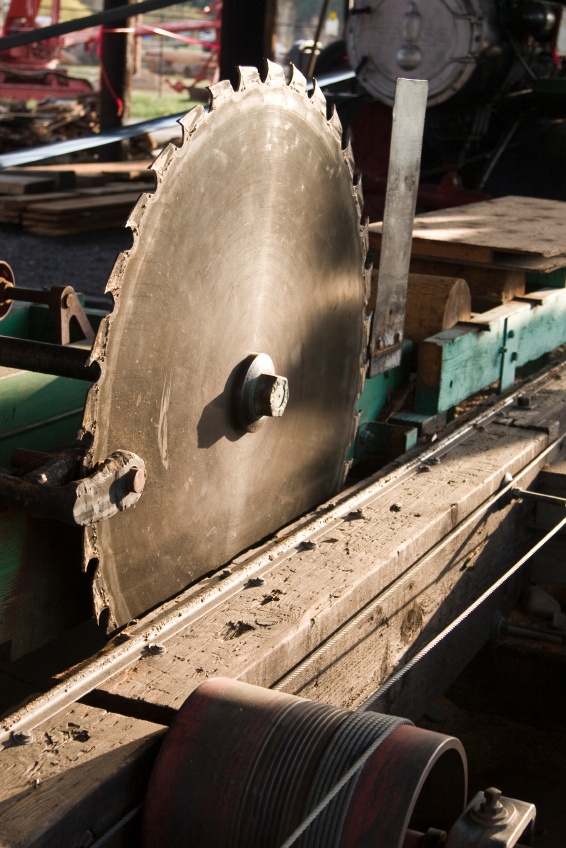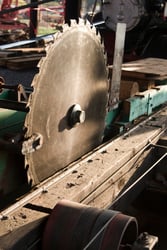3 min read
Despite Recent Closures, US Creates Opportunities for Swedish Sawmills
Antti Kämäräinen : March 20, 2017

Per a December 2016 industry report published by Denmark-based Danske Bank in its Skog & Ekonomi newsletter, Sweden’s softwood lumber output is expected to fall by an estimated 450,000 m³ per year in 2016/2017. The report noted that three recent sawmill closures and other capacity reductions announced by Swedish forest products manufacturer Södra will alone account for a 325,000 m³ decline in output per year. There have been scores of other regional mill closures and consolidations over the last few years that will affect softwood lumber output in 2017.
That said, the various closings and production cuts also coincide with resumed production at several previously-idled facilities and process improvements made at several sawmills that will eventually result in increased output. Danske Bank also recently wrote that the evidence suggests that Donald Trump's election will continue to drive the American economy, and his promises of investments in infrastructure, tax cuts and trade revisions will benefit the Swedish sawn timber market.
and process improvements made at several sawmills that will eventually result in increased output. Danske Bank also recently wrote that the evidence suggests that Donald Trump's election will continue to drive the American economy, and his promises of investments in infrastructure, tax cuts and trade revisions will benefit the Swedish sawn timber market.
The global forest products value chain has been forced to adapt since the Great Recession of 2008, and Sweden has been no exception. Following some initial consolidations and closures in the immediate aftermath of 2008, notable sawmill consolidations in 2016 and 2017 include:
Vida AB
- In January 2016, Sweden’s largest privately-owned sawmilling group, Vida AB of Alvesta announced that it was acquiring the Swedish sawmill Nössemark Trä AB from the Norwegian Moelen group. Vida invested roughly SEK250-300m in enlarging the sawmill, including a new saw line for cutting smaller-diameter logs geared towards an annual production capacity of 150,000 m³ of spruce and pine lumber.
- In September 2016 Vida AB acquired the Tranemo sawmill and impregnating plant from Rörvik Timber AB in Huskvarna. The small-diameter sawmill, which is configured for production of roughly 75,000 m³ of lumber per year, as well as an impregnating plant with an annual capacity of roughly 80,000 m³ per year, are located in the vicinity of Vida’s pine sawmill in Hestra. Following the takeover, Vida boasts a total of three sawmills in the Vetlanda region. Vida plants produced roughly 1.43m m³ of softwood lumber in 2015.
Södra AB
- In March 2016, Swedish company Södra AB of Växjö acquired full ownership of British timber merchant Crown Timber plc of Cirencester, United Kingdom. Crown Timber, which had sales revenues of approximately £120m in 2015, has distribution warehouses and timber impregnation facilities in England, Scotland and Ireland, as well as a sawmill in Finland with an annual output of 150,000 m³.
- In June 2016, Södra AB shuttered two spruce sawmills in Ramkvilla and Torsås, and began carrying out a variety of investment measures in their remaining six sawmills.
- In November 2016, Södra closed its last hardwood sawmill in Djursdala and divested its subsidiaries Nordingrå Trä AB and Södra Wood Föllinge. Nordingrå Trä makes wooden railings, trellises, fences and terraces and was sold to its former owner Pro Unica AB, based in Jönköping. Södra Wood Föllinge makes timber floorboards and was acquired by its former owner Rikard Eriksson. Both companies were sold as part of the ongoing restructuring of Södra Wood.
- In February 2017, Södra announced an investment of SEK215m in three sawmills located in Långasjö, Värö, and Orrefors by the end of the third quarter. The Långasjö facility will be modernized at a cost of SEK100m and, once the improvements have been completed, the output will increase from 280,000 m³ to 360,000 m³ per year.
Bergs Timber
- In June 2016, Swedish company Bergs Timber AB of Mörlunda acquired all shares in the sawmilling company Jarl Timber AB of Broakulla from the Latvian company Norvik Timber Industry (NTI) of Riga.
- In January 2017, Bergs Timber took over the Vimmerby pine sawmill from Setra Group. Three months after signing a letter of intent for selling the works with an annual capacity of 160,000 m³, the two companies came to an agreement. The conclusion remains subject to approval from the appropriate authorities, final financing, and other conditions precedent.
Rörvik Timber AB
- In February 2017, Rörvik Timber AB of Huskvarna shuttered its Boxholm and Myresjö sawmills after attempts to find new owners had failed. The Boxholm pine sawmill had a capacity of around 280,000 m³ per year, and the Myresjö spruce sawmill has a capacity of 150,000 m³. After the closure of the two facilities, Rörvik will continue to only operate only one sawmill in Linghems with an annual capacity of 80,000 m³, which concludes the company’s divestment strategy. These changes will reduce annual output by some 190,000 m³ per year.
With consumption (production + imports) totaling roughly 75 million m3, the US is the largest consumer of softwood lumber in the world. Sweden currently exports very little lumber to the US, with only around 230,000 m3 shipped during the last 12 months. If Danske Bank is correct in its assessment of expanding opportunities due to the “Trump effect,” the US demand for softwood lumber could swell. With stable US housing starts, no new Softwood Lumber Agreement (SLA) solution in sight, reduced production in Canada due to the mountain pine beetle outbreak and a reduction in allowable annual cuts (AAC), this opens up new opportunities for global exporters.
Despite the active restructuring that has been taking place in the Swedish forest products industry over the last few years—as well as the forecasted decrease in lumber output for 2017—the industry is nevertheless well-positioned to take advantage of these new opportunities in the US.





